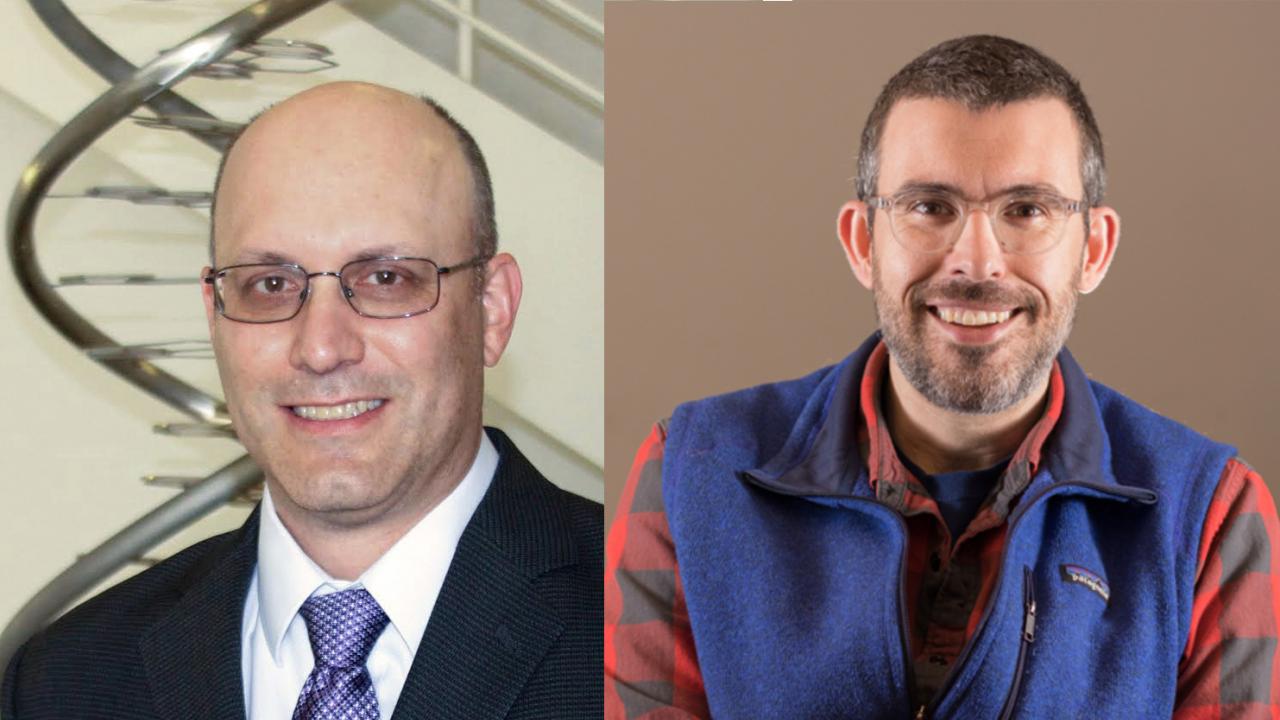
Q&A with the newest Allen Distinguished Investigators
CBS’ Dan Starr and Gant Luxton awarded $1.5M for research
This October marks the 10th anniversary of the Allen Distinguished Investigator program, which was launched in 2010 by Microsoft cofounder Paul Allen to back creative, early-stage research projects in biology and medical research that would not otherwise be supported by traditional research funding programs. Including the new project awards, a total of 82 Allen Distinguished Investigators have been appointed over the past 10 years.
Among this year’s five project recipients are Daniel Starr and Gant Luxton of the UC Davis College of Biological Science. They are studying a protein complex known as LINC, whose role is to physically connect the nucleus to the cell’s interior scaffolding system, otherwise known as the cytoskeleton.
Starr and Gant — who will receive $1.5 million in funding over three years by the Allen Institute — are thrilled to have been named Allen Distinguished Investigators. The pair explain how the award will impact their research.
Q: What does the funding mean to your work?
Starr: This award allows us to take our new joint laboratory in a new, interdisciplinary direction. The National Institutes of Health would never fund us for the questions we address here. We will focus on open-ended exploration of cell biology focusing on how the nucleus mechanically interacts with the rest of the cell. We will use the funds to hire postdoctoral fellows that bring new skills and expertise to our groups. Finally, this award will allow us to integrate the Starr and Luxton labs, bringing a level of synergy that is much greater than the sum of the parts.
Luxton: I totally agree with Dan. The Allen Distinguished Investigator Award will allow the Starr and Luxton Labs to pursue both hypothesis-driven experiments and whole-genome genetic screens designed to understand how the physical coupling of the nucleus to the cytoskeleton influences the ability of cells to regulate their mechanical properties as well as sense and respond to mechanical forces. Our proposed studies will lead to a variety of outputs that will be transformative in their ability to significantly move the nuclear physical cell biology field forward in future studies.
Q: How is UC Davis the right place for this work to be done?
Starr: UC Davis is the ideal place for this work. Our colleagues are excellent collaborators, especially Jodi Nunnari. She has established a world-class imaging core with automated screening using machine learning. This core and collaborating with the Nunnari Lab made the grant competitive. Simply put, we could not have proposed the range of experiments we did anywhere else. We look forward to collaborating with many others at UC Davis, especially the Burgess, Engebrecht and McKenney labs.
Luxton: Between the imaging resources available to us at the MCB Light Microscopy Imaging Facility and our outstanding departmental colleagues/collaborators, there is no question in my mind that our being at UC Davis had a major positive impact on our being selected as recipients of this amazing award. We are especially grateful to Dr. Jodi Nunnari and look forward to working together with her team to harness the power of their novel automated, high-throughput, imaging-based screening methods.
Q: Any other thoughts on this award?
Starr: We thank the Allen Institute for providing funds dedicated specifically to basic cell biology. It is so difficult to get funding these days for the basic questions we are asking. These funds will allow the Starr and Luxton labs to jump to the next level. These funds remove the limits on our imagination and open up completely new avenues of research. I have never been so excited to do research as I am now!
Luxton: We are beyond grateful to the Paul G. Allen Frontiers Group and the Paul G. Allen Family Foundation for having selected us as Allen Distinguished Investigators. This award is especially meaningful to us, as our proposal was selected from a small list of investigators identified by the Paul G. Allen Frontiers Group as leaders in nuclear biology research.
I would also like to thank our non-UC Davis collaborators, including Drs. Greg Gillispie (Fluorescence Innovations, Inc.), Liam Holt (New York University), and Stephanie Weber (McGill University). We are indebted to them for their assistance and support.
Also, I want to echo Dan in saying how thrilled I am by the scientific freedom given to us by the funding associated with this award. I cannot wait to start this new collaborative adventure at UC Davis!
